Argentina, one of the popular gateways to South America, plays host to some of the southern hemisphere’s most dramatic landscapes: think vast, millennial-old glaciers, historic bodies of water, and the weather-chiseled ridge of the Andes Mountains separating it from its neighbor, Chile.
But Argentina isn’t just a place defined by its natural magnificence.
It’s also home to one of the most bewitching capital cities – an unmissable destination for foodies and football lovers alike – as well as curious Welsh settlements, chaotic colonies of animals, and sunkissed vineyards producing world-class wines.
I’ve had the fortune to explore practically the entire country, traveling slowly along the length and breadth of Argentina as part of multiple trips spanning a couple of months in total.
Off the back of that research, here are what I consider to be the best places to visit in Argentina.
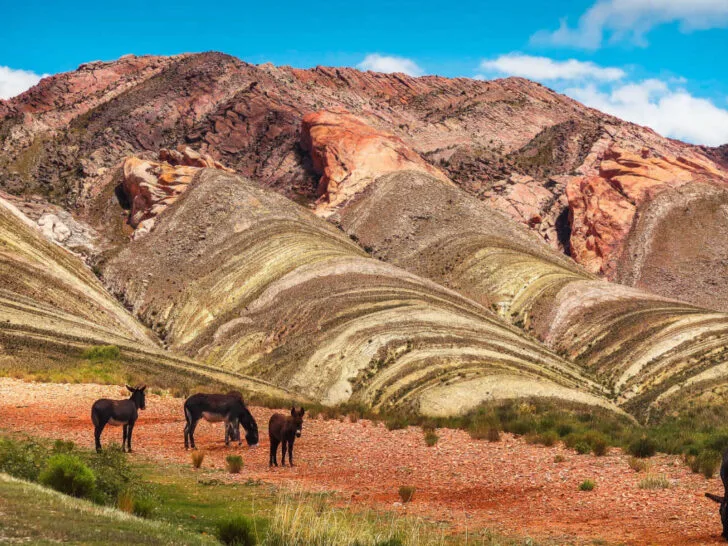
Northern Argentina
1. Track rare wildlife in the world’s second-largest wetlands, the Esteros del Iberá
Home to the world’s second-largest wetland in the world, the Esteros del Iberá (Iberá Wetlands), are a remote, pristine, and hugely important ecosystem in Argentina.
Comprising a 13,000-km2 nature reserve in the north-central province of Corrientes, this protected area is one of the most important freshwater reservoirs in South America and houses an abundance of wildlife.
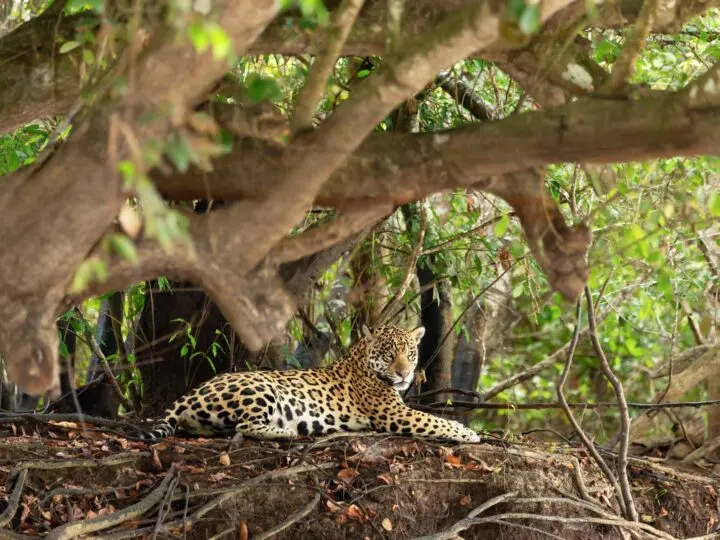
Over 320 bird species are resident here, making it a top destination for birders, while capybara, maned wolves, giant anteaters and even a thriving population of jaguar – reintroduced in 2021 by conservationists – make the Esteros del Iberá one of the best places in Argentina to spot wildlife.
Situated a three-hour journey from the nearest airport, getting here is part of the adventure and explains why it remains such a remarkably untouched and unvisited part of Argentina.
Planning Your Trip to Patagonia?
Save time, stress & money with a customized travel itinerary planned for you by a Patagonia expert
2. Appreciate one of the world’s natural wonders, Iguazu Falls
Step aside, Niagara Falls: there’s a much more impressive set of waterfalls awaiting in Argentina. Comprising 275 cascades and spanning an area 2.7 kilometers wide, Iguazu Falls are a remarkable 195 meters high – dwarfing Niagara, which is a measly half the size.
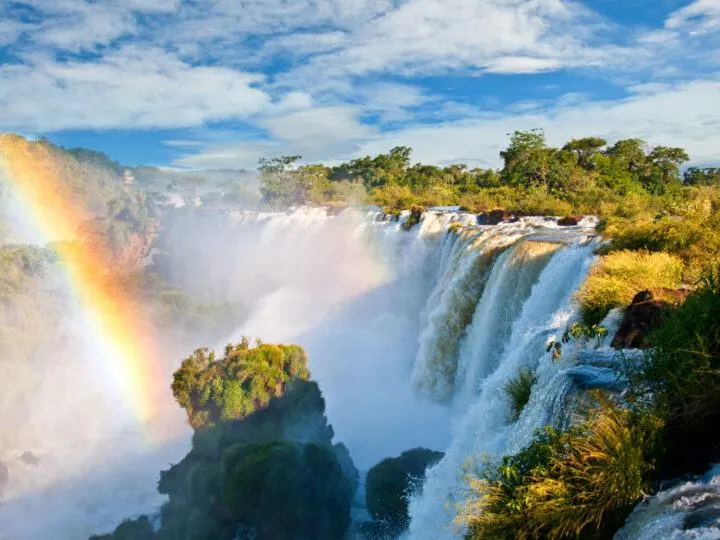
Though you cannot see all of the falls that make up this vast fury of water from the Argentine side – you’ll need to cross into the Brazilian side to tick off them all – visiting Parque Nacional Iguazú (Iguazu National Park) in Argentina will still grant you spellbinding views of these dramatic falls.
Hike through the dense jungle of the national park – where toucan and brown capuchin monkeys might be glimpsed – to the Garganta del Diablo (the Devil’s Throat), where a platform perched above this fall gives you utterly unforgettable views as the water cascades down with a deafening roar.
3. Road trip to the land of “white gold”, Salinas Grandes
Neighboring Bolivia might take the crown for the world’s largest salt flats, but Salinas Grandes in the Argentina puna remains a dreamlike destination and a worthy place to visit in Argentina.
Argentina economy update
The Argentine economy is a huge mess at the moment, with inflation expected to hit 200% this year. Using Argentine pesos can therefore be a nightmare – and mean you lose a lot of money. The blue dollar (an unofficial exchange rate that gives you a better conversion than the official rate) is around, but if you want to avoid carrying lots of cash, you can now pay using your credit card and get an exchange rate similar to the blue dollar rate. You must choose to pay in Argentine pesos (not USD!) to secure this rate.
Both Mastercard and Visa give you what is called the MEP rate, which is almost as good as the blue dollar rate. Mastercard will charge you the official rate but refund you the money a few days later; Visa will charge you the MEP rate from the beginning.
If you do want to have some Argentine pesos for paying in cash (which I highly recommend as you will need them for some restaurants and attractions), it’s best to use Western Union, whereby you send cash to yourself using the Western Union app and then withdraw it in Argentine pesos from one of their branches in Argentina. Bear in mind, those in El Calafate and Ushuaia can run dry of notes, so it can be easiest to do this in Buenos Aires.
Additionally, you can bring USD (unmarked and untorn hundred dollar bills), which you can exchange at “cuevas” (unofficial exchange houses). These will be able to give you the blue dollar rate and any hotel owner will be able to tell you where your nearest one is. Souvenir shops in most parts of the country will be able to give you pesos in exchange for dollar bills – although they might not give you the best rate.
Avoid cash machines. Currently, the maximum withdrawal is the equivalent of $15 USD in Argentine pesos and it will cost you $10 USD in fees.
Spanning more than 500 kilometers and with salt melting away into the distance as far as the eye can see, this curious, high-altitude landscape lends itself to comical perspective photography. Visit by hiring a vehicle or taking a tour from Purmamarca, Jujuy, or Salta; en route, you’ll catch dazzling views of splendid lagoons and walnut plantations.
4. Photograph the rainbow hues of the Quebrada de Humahuaca
Argentina’s northwestern provinces are packed with otherworldly sights and the Quebrada de Humahuaca (Humahuaca Canyon) is no exception. This 155-kilometer-long mountain valley is famous for its vibrantly colored rock formations as well as for its historic, Quechua-speaking villages.
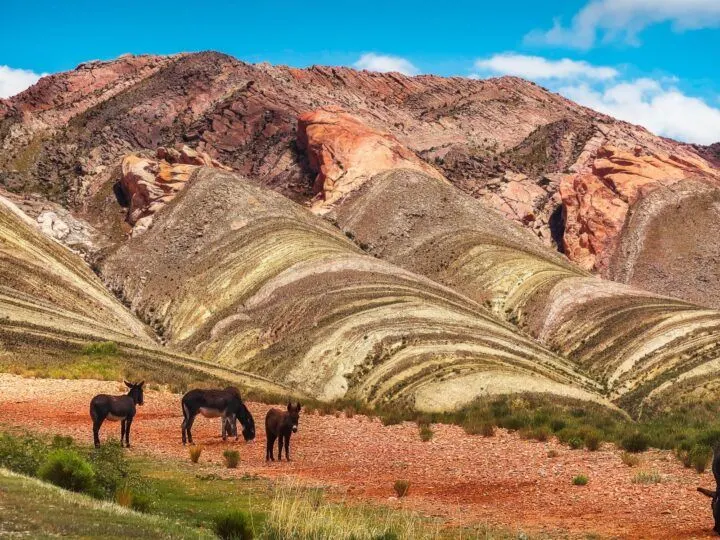
To the south, the Cerro de Los Siete Colores (Hill of Seven Colours) lives up to its name with a magical rainbow of hues caused by the mineral content of the soil and towers over the colonial village of Purmamarca.
Adobe houses rub shoulders with the centuries-old Iglesia de Santa Rosa, while a daily market on the town square makes this an excellent place to purchase sweaters and blankets wove from llama wool.
5. Discover the enchanted village of Iruya
Still within Quebrada de Humahuaca, but miles away from the typical tourist trail, the enchanting village of Iruya lies within the sheer walls of the canyon, with many of its adobe houses built up into the valley sides.
The setting is dramatic; clamber up to the Mirador de la Cruz to appreciate the full magic of this village or head to Mirador del Condor to catch sight of Andean condors, which typically take to the sky around 3pm.
6. Appreciate colonial architecture in Córdoba
As the country’s second-largest city, Córdoba is an easy pick when it comes to choosing the best places to visit in Argentina. You can feel both the pre-Hispanic and colonial influences in much of this pretty city, which houses some of the best-preserved colonial buildings in the whole of Argentina.
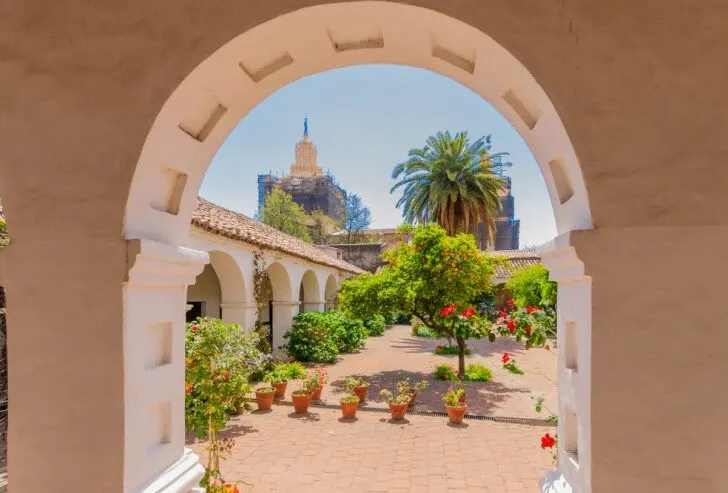
Crowned the Cultural Capital of the Americas in 2006, Córdoba thrives on its blend of old and new. With three universities in the city, it’s no wonder there’s plenty to do here.
Browse one of its four municipal galleries – covering everything from fine art to contemporary work – and spend an evening in the Güemes neighborhood, where independent craft stores and crowded bars attract students and visitors alike.
7. Tour Talampaya National Park in a 4WD
The dusty stone pillars of Parque Nacional Talampaya (Tamlampaya National Park), chiseled away by millennia of rain and wind count as some of the most surreal rock formations you’ll find in Argentina.
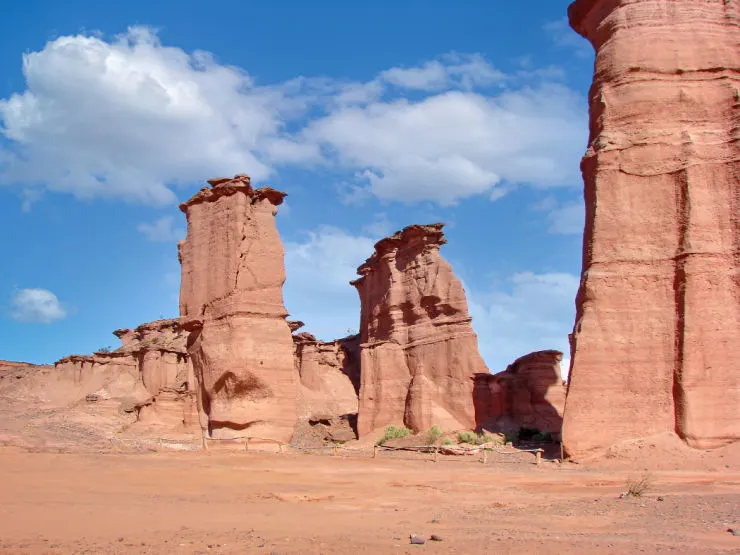
Lying in the eastern province of La Rioja, this desert landscape is best explored by 4WD and you must take a guide; visit Talampaya’s official website to arrange a tour.
Most head directly to the Cañón de Talampaya, where guanaco, rhea, and condors can be sighted, as well as its focal point, the Cajon de Shimpa, a deep gorge with towering, 80-meter-high walls that are only seven meters wide at its base.
8. Learn about Andean cultures in Salta
Much of Argentina’s northwestern regions have more in common with Bolivia than they do Argentina. Salta is a fine example. While its handsome buildings and ornate church, the Iglesia San Francisco, belie its colonial origins, this city is packed with museums dedicated to the pre-Columbian cultures that came before.
One of the best is the Museo de Arequeología de Alta Montaña, which specializes in the Inca and their child sacrifices – with the bodies of three such children discovered on a nearby mountain peak now, controversially, on display in this museum.
There’s so much to see and do in the city, and our comprehensive guide to the best things to do in Salta will see you adding it to your Argentinian itinerary in no time.
Northeastern Argentina
9. Get familiar with Argentine literature in San Antonio de Areco
Located about an hour and a half northwest of Buenos Aires, the town of San Antonio de Areco is the perfect day trip from the capital. Known as the National Capital of Tradition, it’s rich in the history and culture of the Argentine countryside and blessed with a wealth of museums, including the Museo Gauchesco Ricardo Güiraldes.
Dedicated to the author Ricardo Güiraldes, it also covers the culture of the local gauchos, the name for the cowboys who are both a folk symbol and a typical feature of pampas life in Argentina.
10. Drink, dance, and dine in Buenos Aires
Most visitors to Buenos Aires pass a few days in its dazzling capital, home to Parisian architecture and Latin passions.
Unsurprisingly, Buenos Aires is home to many of Argentina’s top and most well-known tourist attractions, and it’s remiss to spend time in this city without dancing in a tango hall (milongas), dining like a king in a local steak house (asado), or making a pilgrimage to the Cementerio de la Recoleta to track down Eva Perón’s grave.
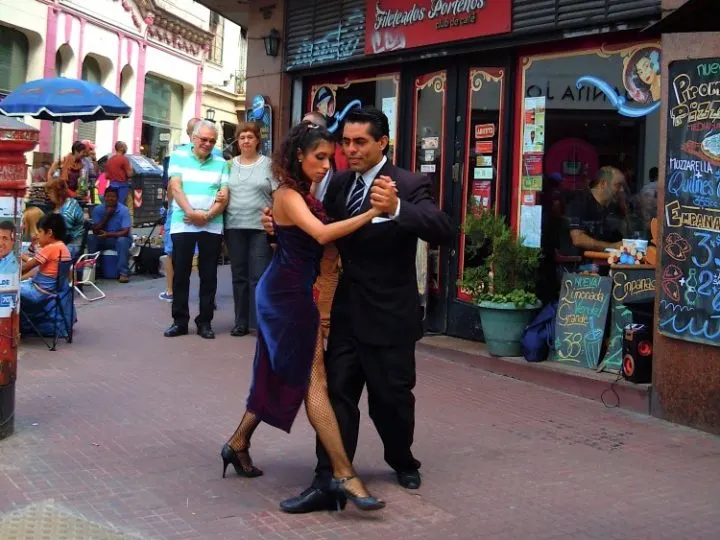
In the south, the working-class neighborhood of La Boca has transformed into a prime tourist destination.
Wander through the open-air museum of El Caminito, where tenement shacks have been transformed with a lick of brightly colored paint, before catching a beautiful game at La Bombonera, where legendary team Boca Juniors play.
For a truly porteño experience, don’t miss the Feria de San Telmo, a weekly Sunday market hosted in one of the city’s prettiest neighborhoods. Craft stalls and tables groaning beneath the weight of countless antiques await, while you can even catch music performances and impromptu tango dancing, too.
11. Surf the waves of Mar del Plata
Mar del Plata, a city 415 kilometers south of Buenos Aires, is a popular escape for porteños during the hot, summer months. With its beachside hotels and 47 kilometers of beaches, it’s got everything for a spot of relaxation – although, during summer, you’ll find it’s got too many other visitors, as well.
However, surfers have found their Mecca, particularly as the best surfing conditions are found between April and October.
Head to Playa Grande for the most consistent breaks and, if you’re new to surfing, sign up with one of the many surf schools to guide you in choosing the location and practicing your moves before you hit the water.
Northwestern Argentina
12. Summit the lofty peak of Volcán Aconcagua
The highest mountain outside of the Himalayas, Aconcagua invites adventure seekers and adrenaline junkies looking to summit one of the “Seven Summits” – the highest mountains in each continent.
Just a few thousand people try to reach its 6,960-metre peak every year and even the easiest route – the route up the Northwest Ridge – isn’t technical but still poses a real challenge due to the altitude.
All hikers must apply for a permit in nearby Mendoza and travel with experienced trekkers or, better still, a guide, is highly recommended.
13. Go wine tasting in viticulture capital Mendoza
With its vine-slung valleys fed by a clever system of irrigation and backdrop of snowy Andean peaks, Mendoza is itself a remarkable place to visit in Argentina. However, oenophiles from across the globe head here in order to sample the region’s most famous export: malbec.
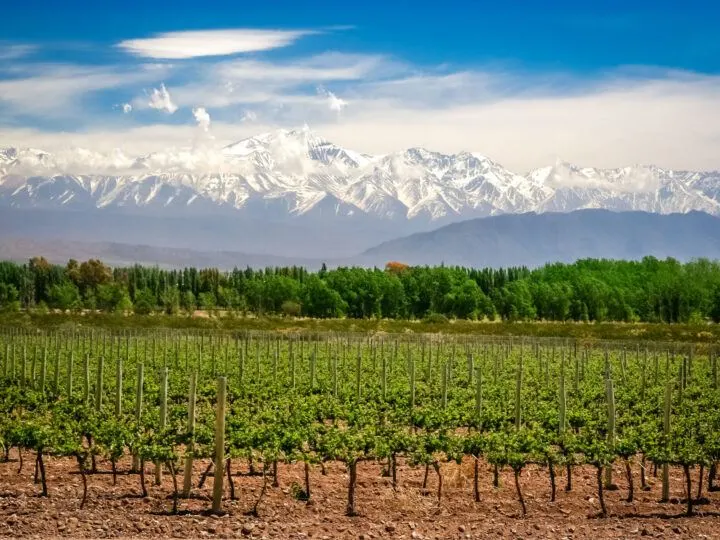
Local wineries abound and those in nearby Maipú can be easily visited either on a wine tour directly from Mendoza or using public transport. Head further afield to the wineries of the Valle de Uco or Luján de Cuyo to encounter those at the forefront of Argentine wine production.
Southern Argentina (Patagonia)
14. Conquer the summit of Volcán Lanín
Lying in the far west along the ridged backbone of the Andes Mountains, Parque Nacional Lanín (Lanín National Park) is another of Argentina’s most spectacular protected areas.
If you’re keen to summit a volcano but don’t quite have the expertise – of the lungs – for Aconcagua in the north of the country, the perfectly conical Volcán Lanín might be the perfect alternative.
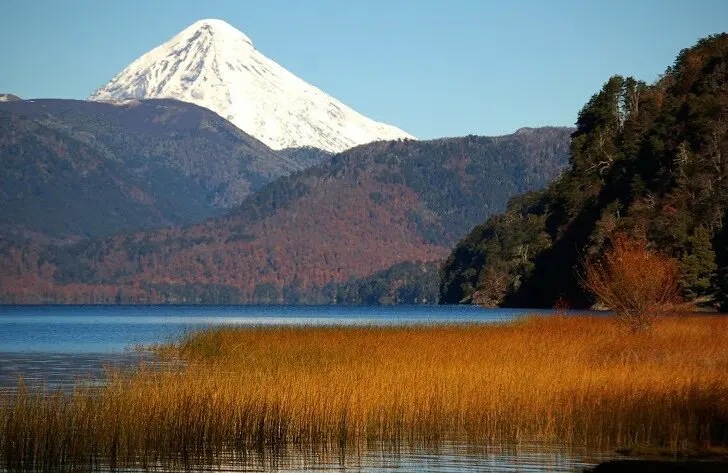
Set within forests of southern beech typical to Patagonia and with other easier hikes available, the route to the 3,776-metre summit of Volcán Lanín normally follows the north face and takes two days.
While it remains a challenging activity and one for which it’s highly recommended to use the services of a local guide, hiking to the top of this mountain – and absorbing the incredible panoramic views of lakes and mountains from its peak – will be utterly unforgettable.
15. Drive the Ruta de los Siete Lagos
Ruta 40, the highway that slices down through Argentina from the very northern tip of the country to the far south, is considered one of Patagonia’s finest road trips. But the section dubbed Ruta de los Siete Lagos (Route of the Seven Lakes) is perhaps the most picturesque of all.
Connecting San Martín de los Andes in the north with Villa La Angostura 108 kilometers south, this drive takes you along the banks of seven shimmering lakes, with the scenery tied to the seasons.
Drive it in summer (December through February) for landscapes vibrant green or travel here in autumn (March and April) when the trees turn burnt umber.
16. Go hiking and biking from Swiss-inspired Bariloche
Sitting at the heart of the Argentine Lakes Region and within the mountain and lake-scattered landscapes of Parque Nacional Nahuel Huapi (Nahuel Huapi National Park), Bariloche (sometimes known as San Carlos de Bariloche) attracts visitors in their droves.
Summer is peak season for visitors, who head to this town on the banks of Lago Nahuel Huapi to enjoy everything this capital of adventure has to offer.
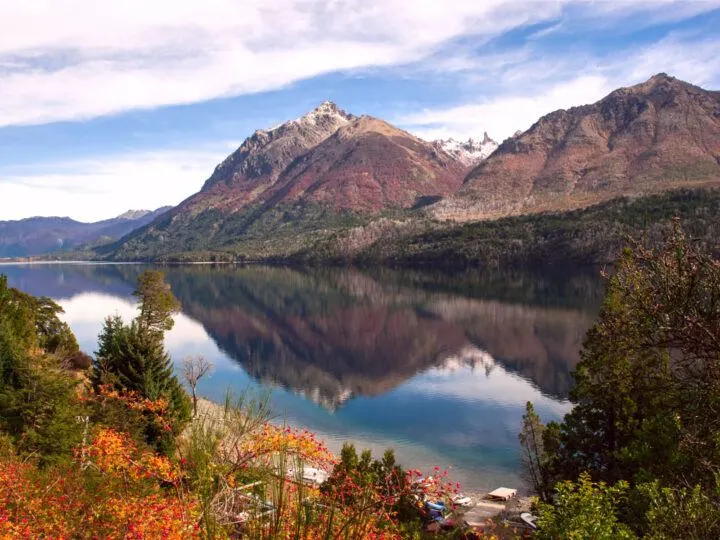
Whether you’re keen to mountain bike on lakeside gravel paths or head up into the snow-dappled peaks of Cerro Catedral (which becomes the region’s most visited ski destination in winter), Parque Nacional Nahuel Huapi has it all.
Best of all, Bariloche, with its Swiss-inspired architecture, surprisingly good craft beer, and even more surprisingly fantastic chocolate, make this a town where you won’t regret whiling away a good few days. Be aware that Bariloche can be packed in the summer months between December and February.
17. Go wildlife watching in Península Valdés
Considered one of the best places to see wildlife in Argentina (and South America), the Península Valdés has been recognized by UNESCO for its abundance of wildlife, which includes everything from sea lions and elephant seals to Magellanic penguins.
But it’s the fact that the waters off this peninsular are the habitat for the largest breeding population of southern right whales in the world is what makes this region so unique.
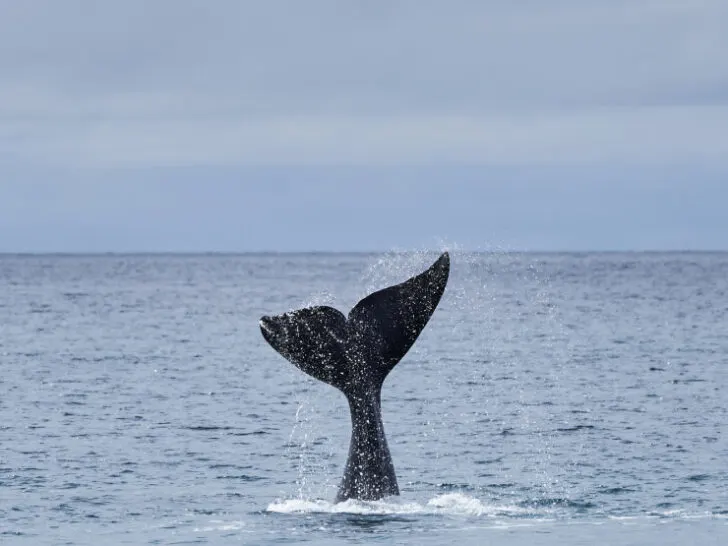
Between June and mid-December is when these mammals arrive to reproduce and the best way to catch sight of them is as part of a boat tour, which can be arranged in nearby Puerto Madryn or on the peninsula itself at Puerto Pirámides. Between mid-February and mid-April, orcas can also be seen at high tide on the beaches snatching sea lions from the shore.
18. Meet Welsh settlers in Gaiman
You’ll likely be surprised to learn that Argentina has the highest number of Welsh speakers outside of the United Kingdom. It’s all down to the Welsh settlements found in the Patagonian steppe, where 153 hardy arrivals from Europe landed on the shores of the Chubert Province in 1865.
Now over a hundred years later, these remain the epicentre of Welsh-Argentine culture. Tours from Trelew (itself an attractive but useful base) take you to quintessentially Welsh Gaiman where you can indulge in a very Welsh activity – afternoon tea – in one of the traditional teahouses dotted around the town.
19. Discover the 10,000-year-old cave paintings at the Cueva de las Manos
Tucked into the recesses of a large cave lie one of Argentina’s most significant prehistoric discoveries. Now known as the Cueva de las Manos – the Cave of Hands – this site is covered by around 800 handprints, which are thoughts to have been marked on the wall around 7370 BCE.
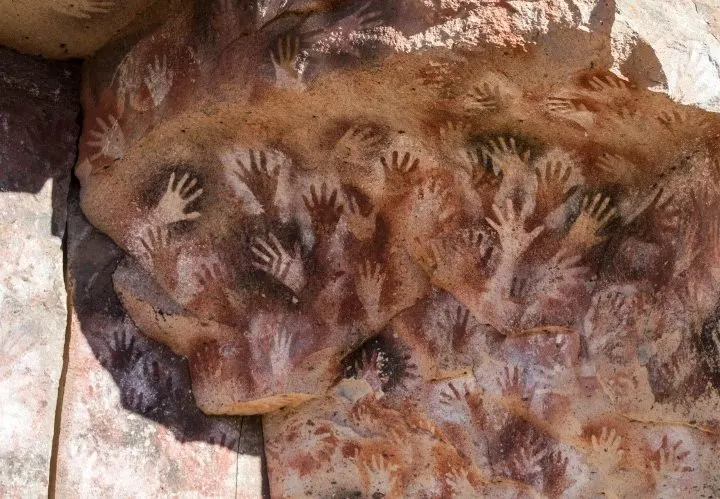
You can take a tour from Perito Moreno or Los Antiguos or drive yourself here with a hire car; one-hour tours ($12 USD) depart from the entrance to the site.
20. Stretch your legs in Los Glaciares National Park
Those who crave adventure should add Los Glaciares National Park to their Argentine itinerary. Situated deep into Argentine Patagonia near the Chilean border, this national park stretches north to south along the eastern edge of the incredible hielo sur, the Southern Patagonian Ice Field.
In fact, a quarter of this national park sleeps beneath ice, with much of it high above ground level and caught in the granite spires of the mountains that dominate this terrain. It’s one of the most beautiful places in Patagonia and Argentina as a whole.
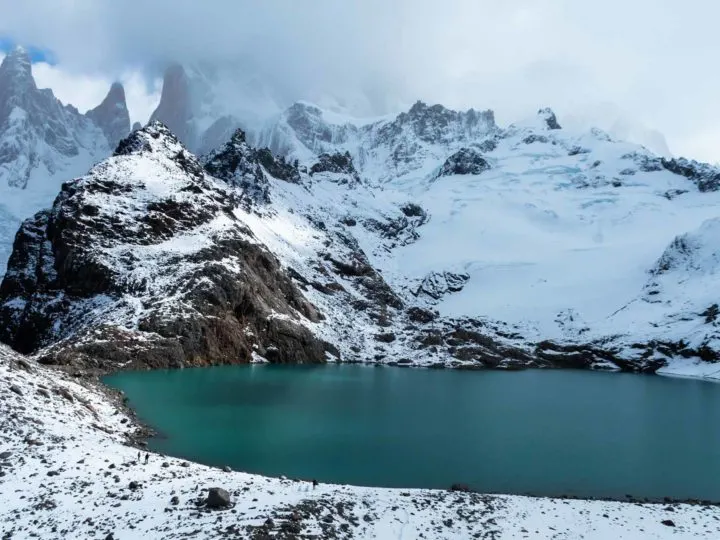
The most iconic is the 3,405-metre Monte Fitz Roy, beneath which sits the glacier-meltwaters of Laguna de los Tres – and to which hikers make their pilgrimage along a challenging one-day trek. This hike departs from the nearby town of El Chaltén, which is considered the national trekking capital.
Other paths abound for nature lovers and trekkers alike, including the 70-kilometre Huemul Circuit, while visitors will fall swiftly in love with the park’s glorious blend of high-altitude mountains and low-elevation steppe, that’s punctuated by freshwater lakes and rich in wildlife, including Andean condors, rare huemul deer and even pumas.
21. Stay at a traditional Patagonian ranch
Sheep ranching in the late 19th century saw both Argentine and Chilean Patagonia become some of the most important sheep farming areas in the world. Ranches built to house the farmers are some of the only remaining relics of this boom and you can even stay in one of these historic, and often remote, homes.
One of the best is Estancia La Estela, a family-run ranch that sits on the shores of Lago Viedma equidistant between El Calafate and El Chalten and offers horseback riding excursions, as well as traditional lamb barbecues.
22. Catch calving icebergs at the Perito Moreno Glacier
Glacier El Perito Moreno is Argentina’s most famous glacier, sitting within the mountainous terrain of Parque Nacional Los Glaciares (Los Glaciares National Park) in Patagonia and one of the reasons why Argentina is among the best countries in South America for dazzling natural landmarks.
Situated just a short bus journey from the town of El Calafate, this ice giant kneels in the grey-blue water of Lago Argentino – one of Argentina’s most stunning lakes – covers an incredible 25,000 hectares and calves egg-blue icebergs at a remarkable frequency from its frigid tongue.
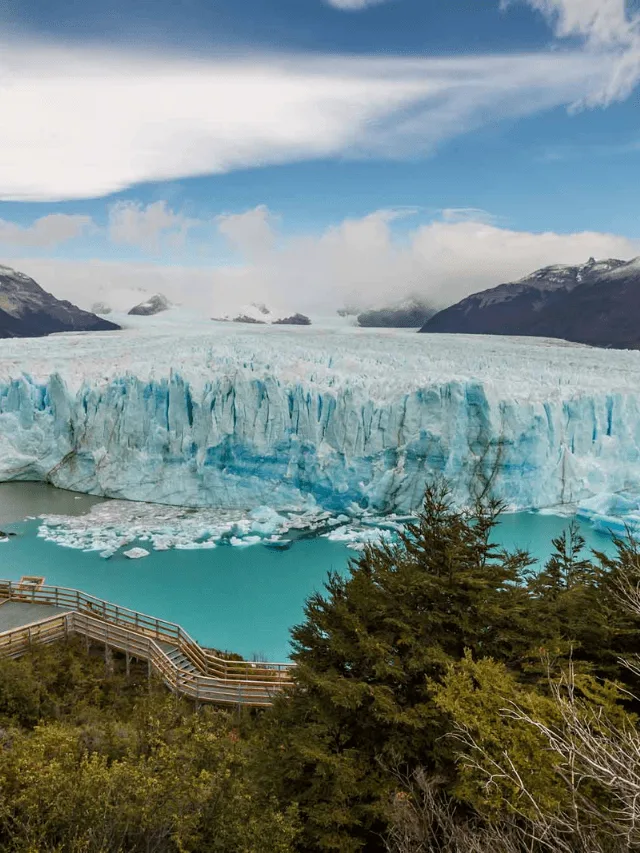
The best way to catch this remarkable phenomenon is from the boardwalks situated a few hundred metres from its snout; late afternoon after the ice has warmed during the day is the most likely time to see it happening.
23. Go to the ends of the earth in Ushuaia
Right at the very tip of the South American continent sits Argentina’s southernmost city: Ushuaia.
Described by many as at the very ends of the earth, Ushuaia has a magical quality, aided no end by its spellbinding scenery: situated at the edges of Tierra del Fuego island, it’s hemmed in by the Beagle Channel in the south and snow-heavy mountains in the north.
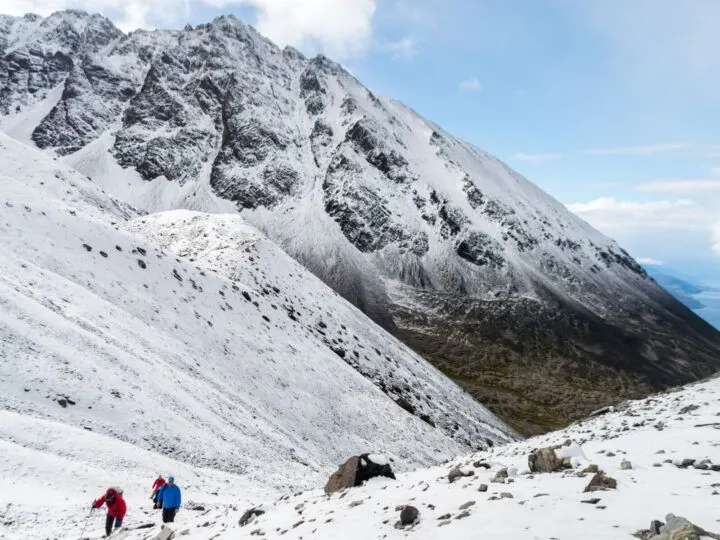
Founded as a penal colony, Ushuaia has a curious history. There’s no better place to learn about it than at the vast and fascinating Museo Maritimo y Museo del Presidio, which is set in the city’s former prison.
Alternatively, head for the White Continent from here to go to the true ends of the earth: expedition cruises to Antarctica leave from here, many of which visit Cape Horn along the way.
Need some advice for choosing an Antarctica cruise? I highly recommend Swoop Antarctica, whose staff have extensive, first-hand experience of sailing to Antarctica and, because they sell cruises for all the well-known companies, can give you handy, impartial advice for choosing the one that best suits you.
Check out their cruises to the Antarctic Peninsula – for a chance to set foot on mainland Antarctica and explore some of the most beautiful parts of the continent – and to South Georgia and the Falklands – for a wildlife bonanza.
We’ve also explored when’s the best time to visit Antarctica – which I highly recommend reading before you start considering a trip. The Antarctica travel season is short and the experiences in different months vary wildly.
24. Hike in the superlative scenery of Tierra del Fuego National Park
West of Ushuaia lies another of Patagonia’s finest national parks. Packed with day hikes that take in stupendous views across dense forests of southern beech and onto the watery depths of the Beagle Channel, Parque Nacional Tierra del Fuego (Tierra del Fuego National Park) is one of the must-visit destinations in Argentine Patagonia.
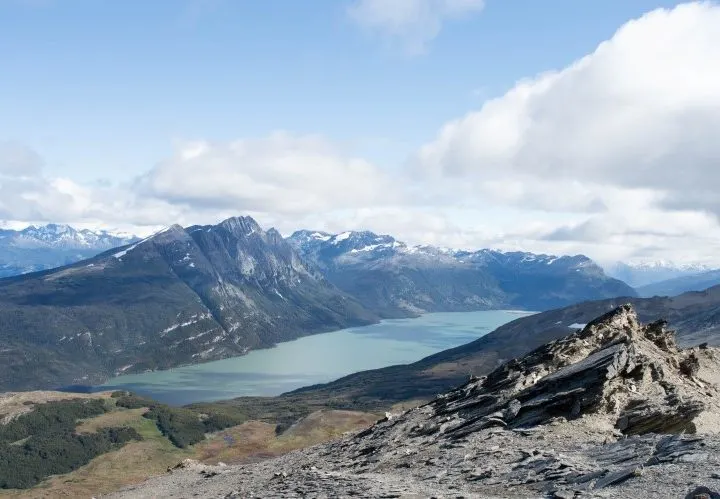
You’ll find plenty of birdlife, including condors and albatrosses, as well as the Southern Fuegian Railway.
Better known as the Train to the End of the World, this 500 mm gauge steam railway was originally used to transport prisoners working to chop timber and now takes you deep into the national park on the final seven kilometers of track. It’s a bit of a tourist trap, but if you love your railways, then it’s a must-do activity.
25. Visit Tierra del Fuego’s first estancia
Founded in 1886 by Anglican missionary Thomas Bridges, Estancia Harberton takes the title of the island’s first ranch. Now operated by Bridges’ descendants, and with the excellent Museo Acatushún that showcases the area’s marine mammals and bird species at its heart, it’s a worthwhile place for a day trip.
Boat tours from Ushuaia take you via the Beagle Channel, the 240-km strait separating Tierra del Fuego from Chile, and where colonies of fur seals, Magellanic penguins, and cormorants can be spotted. Keep your eyes peeled for whales and dolphins in the water.
FAQs about Argentina
What is the most beautiful part of Argentina?
Patagonia is arguably the most beautiful part of Argentina. Some would not agree, as much of it is wild and barren, but it’s these qualities that equally make Patagonia so enchanting. In this vast region, you’ll find towering glaciers, vast, unspoiled lakes, and endemic wildlife, with renting a car and taking a road trip around Patagonia, as well as hiking in the region’s national parks, two of the best ways to dive into the region’s beauty.
Is Argentina safe to visit?
Argentina is ranked 68th in the 2021 Global Peace index and third among the safest South American countries. With that said, it’s best to keep some safety considerations in mind. For instance, avoid dark alleys at night and don’t wear anything flashy when wandering the city’s streets. Read our guide to safety in Buenos Aires for more information.
Is Argentina expensive to visit?
On average, the cost of living in Argentina is lower than in the US or Western Europe, meaning Argentina is affordable for travelers. However, flights can be expensive (considerably more so than in neighboring Chile), with long-distance bus travel often a much more affordable way to cover large distances. Staying on a budget is not impossible here; cooking your own meals, not dining out often, and using public transportation can help trim down your expenses. Learn more about traveling to Patagonia on a budget.
Is English widely spoken in Argentina?
Many people in Argentina speak English, although only a small percentage speak it fluently. In cities familiar with tourism, such as Buenos Aires and Mendoza, you can get by with English as most restaurants provide English menus and museums have English-speaking tour guides. This may not be the case in a small town deep in Patagonia. In that case, we recommend learning basic Spanish so you’ll be able to ask for directions and prices, hire a local guide, or join a group of experienced travelers.
